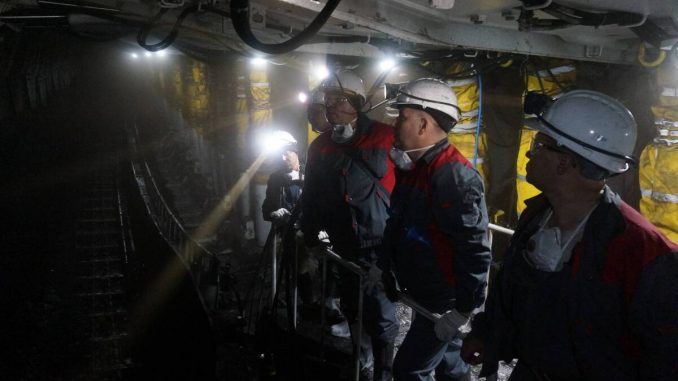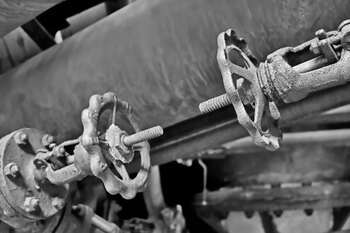
Mining is a vital industry that supplies the raw materials necessary for countless products and infrastructure development. Within this rugged world of excavation and resource extraction, an often-overlooked but indispensable component plays a crucial role: valves. Valves are the unsung heroes of mining operations, controlling the flow of various fluids and gases critical to the mining process. In this blog post, we’ll explore the significance of valves in mining, their essential functions, types, and the role of innovation in enhancing mining efficiency and safety.
The Significance of Valves in Mining
Mining operations are complex and multifaceted, involving the movement, processing, and transportation of various materials, including water, slurry, air, and chemicals. Valves serve as gatekeepers, regulating the flow and direction of these materials throughout the mining process. Their significance can be summarized in four key areas:
Material Handling
Valves control the movement of materials, such as water and ore, within the mine, ensuring they reach their intended destinations for processing or transportation.
 Safety and Environmental Compliance
Safety and Environmental Compliance
Valves play a vital role in managing potentially hazardous materials, preventing leaks, and ensuring compliance with environmental regulations.
Efficiency
Properly designed and maintained valves improve the efficiency of mining operations by minimizing downtime, reducing energy consumption, and optimizing material flow.
Cost Reduction
Efficient valves can significantly reduce operational costs, including maintenance, energy, and material handling expenses.
Functions of Valves in Mining Operations
Valves in mining operations perform various critical functions:
Flow Control
Valves regulate the rate and direction of material flow, ensuring that water, slurry, or chemicals are distributed as needed throughout the mine.
Isolation
Valves isolate sections of the mining process, allowing for maintenance or repairs without disrupting the entire operation.
Pressure Control
Valves maintain and control pressure levels in pipelines, preventing over-pressurization or under-pressurization of systems.
Fluid Handling
In addition to water and slurry, mining often involves the handling of corrosive or abrasive materials. Valves must be durable and resistant to wear and tear.
Emergency Shutdown
Valves can be crucial for emergency shutdown procedures, preventing accidents and containing potentially hazardous situations.
Types of Valves Used in Mining
Mining operations require a range of valve types, each designed to perform specific functions and withstand the harsh conditions found in mines. Here are some common types:
Gate Valves
These valves control the flow of fluids by raising or lowering a gate within the valve body. Gate valves are ideal for on/off applications and are commonly used in slurry transport.
Ball Valves
Ball valves use a spherical disc to control the flow of materials. They are known for their quick and reliable shutoff capabilities and are often used in high-pressure applications.
Butterfly Valves
Butterfly valves have a circular disc that rotates to control flow. They are often used in water and air handling systems within mining operations.
Check Valves
Check valves allow fluid to flow in one direction only, preventing backflow. They are essential in situations where contamination or reverse flow is a concern.
Knife Gate Valves
Designed for handling viscous materials like slurry, knife gate valves feature a sharp-edged gate that cuts through the material, allowing for reliable shutoff.
Control Valves
Control valves are used to regulate fluid flow and pressure precisely. They are essential for maintaining process control in mining operations.
Safety Relief Valves
These valves protect equipment and systems from overpressure by automatically releasing excess pressure.
Innovations in Valves for Mining
As the mining industry evolves, so does the technology behind valves. Innovations in valve design and materials have led to improvements in performance, durability, and efficiency. Here are some notable advancements:
Materials
Valves designed for mining now use advanced materials that are highly resistant to abrasion, corrosion, and erosion. This extends the lifespan of valves in harsh mining environments.
 Automation
Automation
The integration of automation technology allows for remote control and monitoring of valves, reducing the need for manual intervention and enhancing safety.
Sealing Technology
Improved sealing mechanisms reduce the risk of leaks, ensuring that hazardous materials are contained within the system.
Smart Valves
Smart valves equipped with sensors and data analytics capabilities can provide real-time information about valve performance, allowing for predictive maintenance and enhanced reliability.
Environmental Considerations
Valve manufacturers are increasingly focused on creating eco-friendly solutions, including valves that reduce energy consumption and emissions.
Conclusion
While valves may not be the first thing that comes to mind when picturing a mining operation, they are undeniably the backbone of the industry. These unsung heroes control the flow of materials, maintain safety standards, and improve operational efficiency. As mining technology continues to advance, so too does the role of valves, ensuring that the industry can operate more safely, sustainably, and efficiently. The next time you think about the mining industry, remember that it wouldn’t function as it does without the dependable valves working tirelessly behind the scenes.

Leave a Reply